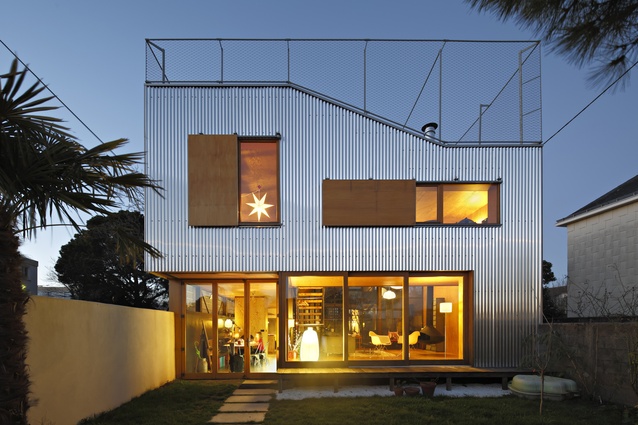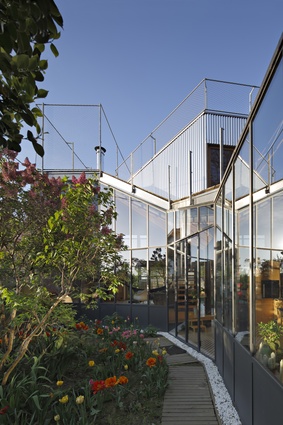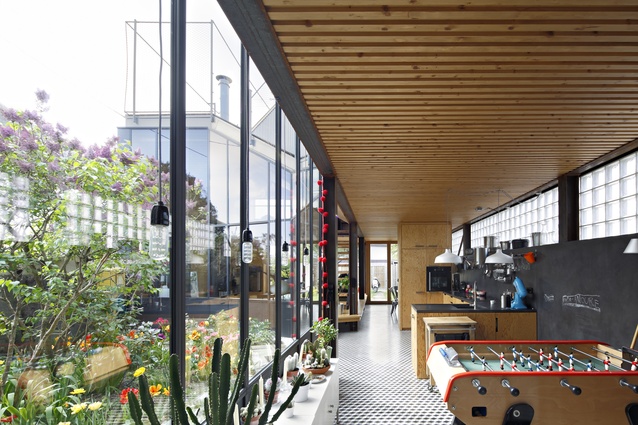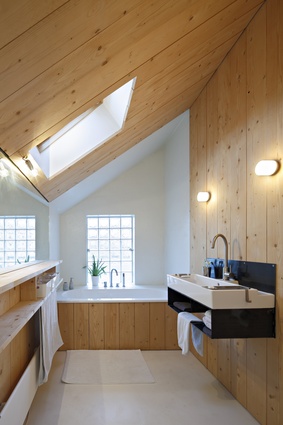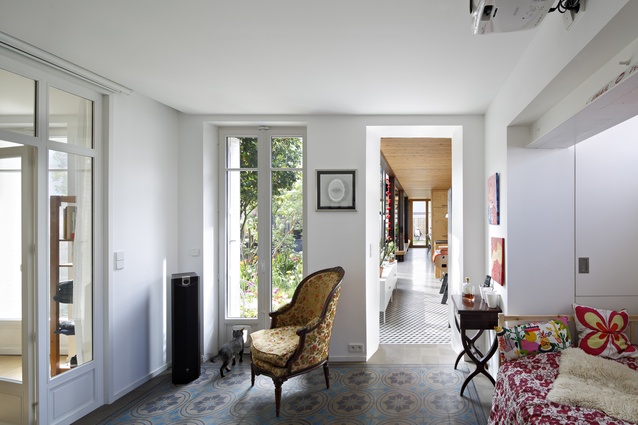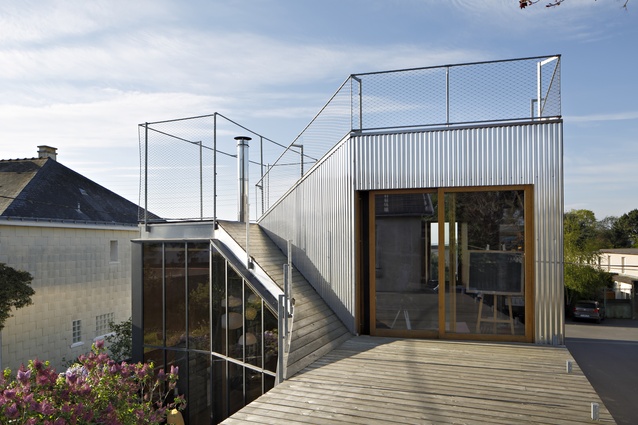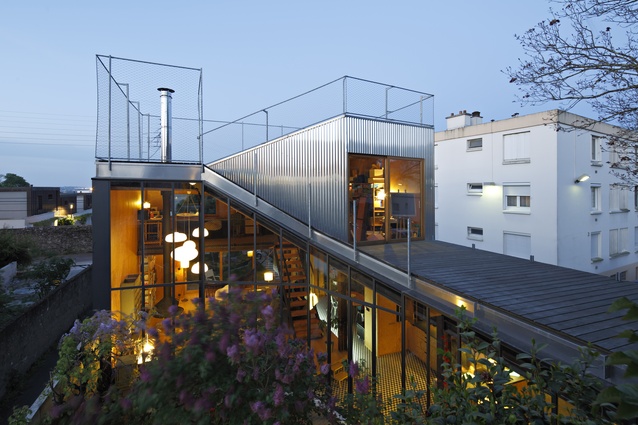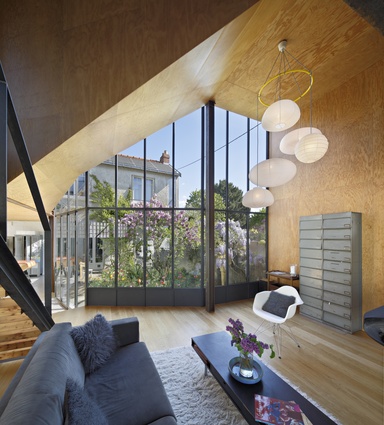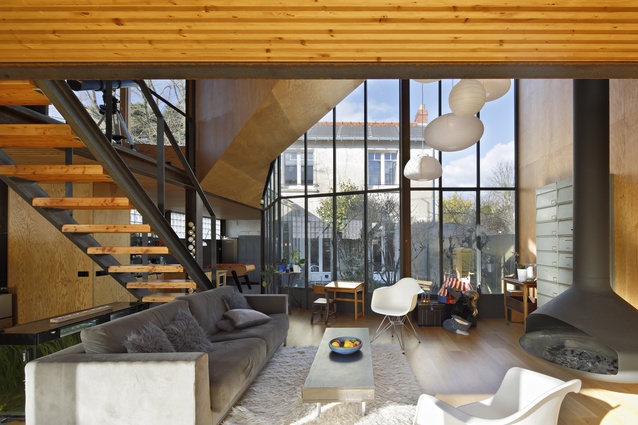New addition: Metallic House
When architects design their own houses it can be an opportunity to push boundaries, past what is currently fashionable and into areas that demand new attention. It’s like realising a dream and discovering a new world simultaneously – answering a question and finding, instantly, several more.
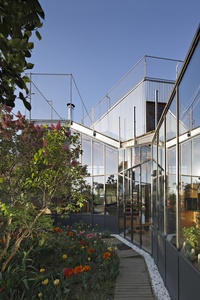
The complexity of this task is even greater in the case of an addition to an architect’s home. Experimentation must be considered in relation to the existing parts, reconciling their differing forms, atmospheres and aspirations. But, as usual, the difficulty of this task is indicative of how rewarding its realisation can be.
In Nantes, France, local architects Marie-Hélène Reich and Antoine Mabire have recently completed an addition to their own home, in which they have created a creative, challenging and deftly considerate relationship between two architectural languages while generating a renewed landscape for their growing family. It is a brave, bold and robustly-realised project.
The prospect of designing the addition was seen as an opportunity to reshape the experience of the site as a whole. As Mabire notes, “extending a house means losing a piece of garden”. This was the fundamental challenge of the project. The solution was to use the shape of the new addition to create a courtyard and roof terrace.
The original masonry house was built in the 1930s on a long 300m2 site. The addition attaches to the original house via a long, low connecting volume that opens out into an intimate courtyard planted with flowering and productive plants. The old house and the new house aren’t slammed together, but instead pulled apart and given space to be themselves. There is no attempt at making both parts of the house replicate each other by by means of materials, forms or detailing.
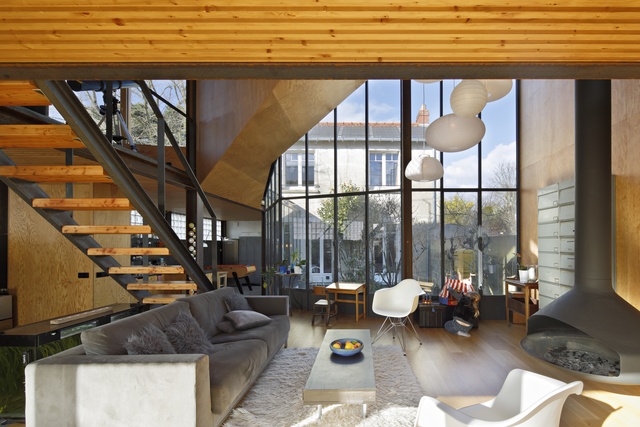
“An extension is an opportunity to have two houses: a new one and an old one. What is interesting is the relation between both,” remarks Mabire. The long, bridge-like form that stretches across the two spaces includes the kitchen and a games room. These spaces are transitional, but also have a still quality imparted by their position facing the lush and colourful walled garden.
Beyond the kitchen the space dynamically turns as the ceiling lifts over the living room. A mezzanine takes advantage of the height while also making sure that the large space still has areas that feel of a human scale. The living room collects light from both the courtyard and the backyard.
The interiors are lined in the natural finishes of timber as well as steel. There isn’t a drop of paint in the interior; instead, the honest textures of materials shine through. The warmth of the timber grain and the density of the black steel were both important in the design. “Wood was a good association with steel and both proposed patterns that create an inner landscape, like clouds do in the sky. For example, we chose to keep visible the patterns created on the steel by the rain during works.”
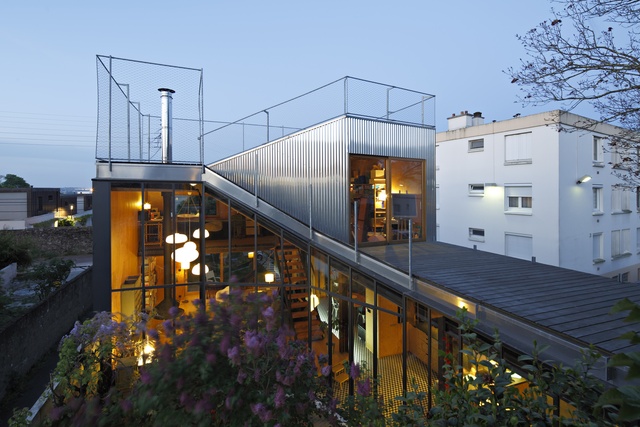
On the exterior the shiny aluminium cladding sets the addition apart from its older counterpart (and from all of the surrounding neighbours for that matter). A caged roof terrace crowns the extreme metallic surface. The uppermost surface of this roof is accessed via a steep ramp.
“We like the fact that it’s not a view you get to easily. The interior life of the house can be routine and it can be difficult to save surprises within that routine. But you get the view of this wide open landscape only if you decide to get there and that saves the magic side of it… we get up there to have a drink or watch the sky and the stars at the end of the day when we feel like having a break.”
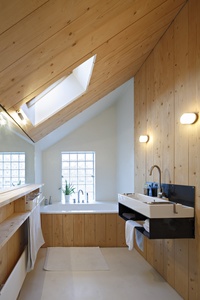
The line of an extended parapet is traced with the wire balustrading and the unusual form of the house is made into a coherent visual whole.
This is a house that demonstrates a genuine approach to family life. The kitchen isn’t fetishised as a pristine catalogue piece, the garden is connected to the living areas and children play games in spaces that are both central and highly visible. Life in the house is active and laced through the spaces with an honesty that extends from the materials used to the planning of the circulation. But it’s not sentimental, either. There is a strength and rigour to the form of the origami-like roof and the shiny cladding.
There is an old adage that states that a home reflects the character of its occupants. If that is true, Marie-Hélène Reich and Antoine Mabire can take comfort in the knowledge that their home is both humane and gutsy – a challenging answer to the question of how to house a family. But it also raises other questions; notably, why aren’t more houses this adventurous?

